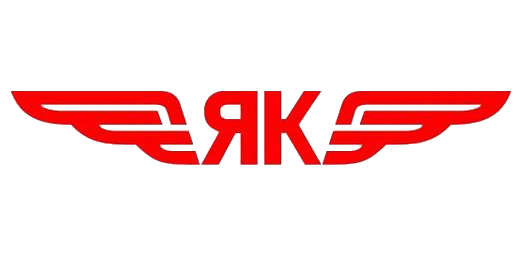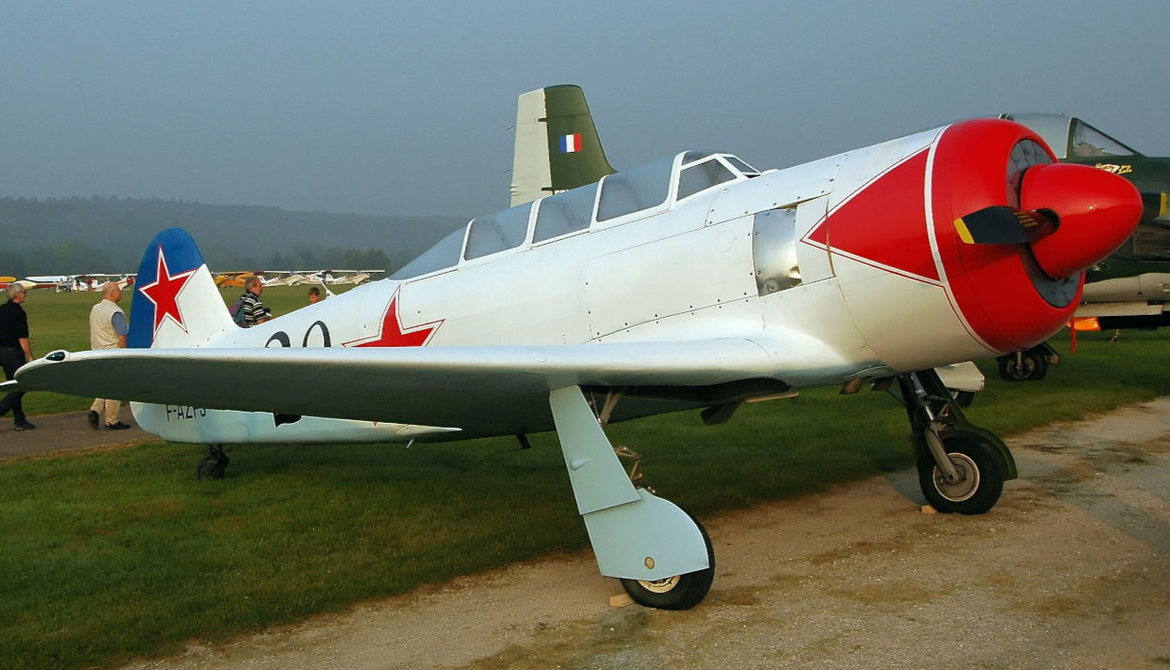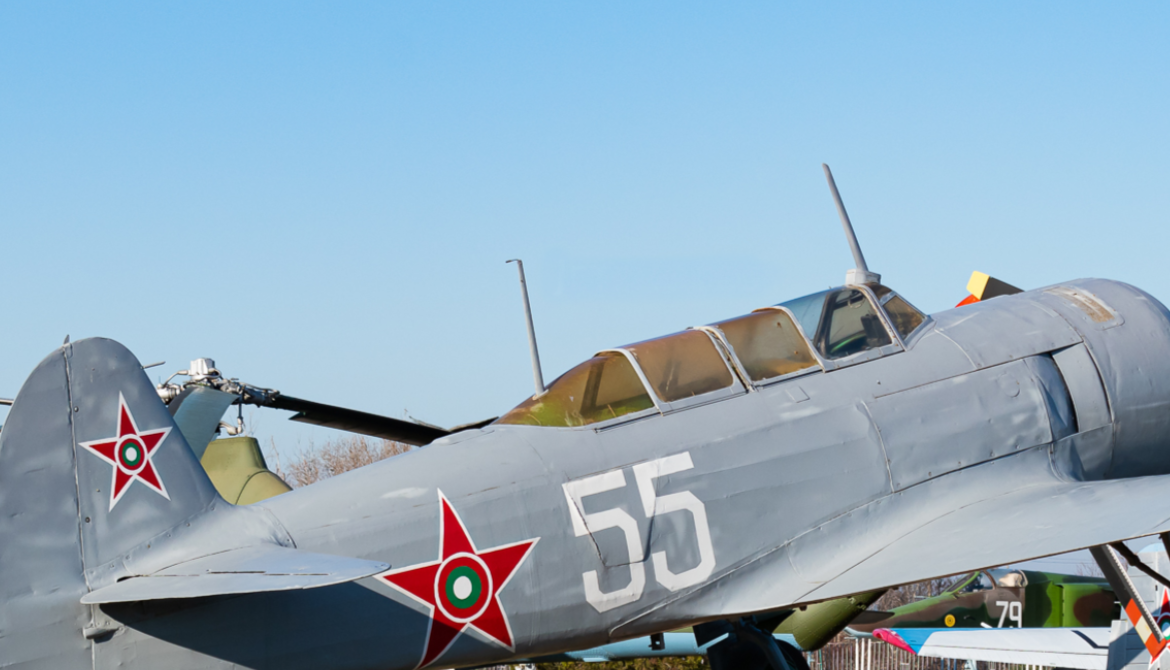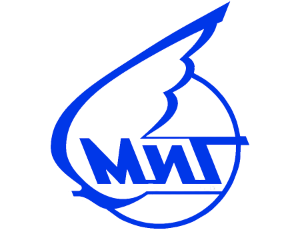JSC A.S. Yakovlev
Yak-11 ("Moose")
|
|||||||||||||||||||
.
History JSC A.S. Yakovlev Design Bureau
Yakovlev Yak-11
(NATO reporting name: "Moose")

The Yakovlev Yak-11 (Russian: Яковлев Як-11; NATO reporting name: "Moose") is a trainer aircraft used by the Soviet Air Force and other Soviet-influenced air forces from 1947 until 1962
Design and development
Origins
The Yakovlev design bureau began work on an advanced trainer based on the Yak-3 fighter in mid-1944, although the trainer was of low priority owing to the ongoing Second World War.[1] The first prototype of the new trainer, designated Yak-UTI or Yak-3UTI flew in late 1945. It was based on the radial-powered Yak-3U, but with the new Shvetsov ASh-21 seven-cylinder radial replacing the ASh-82 of the Yak-3U It used the same all-metal wings as the Yak-3U, with a fuselage of mixed metal and wood construction. The pilot and observer sat in tandem under a long canopy with separate sliding hoods. A single synchronised UBS 12.7 mm machine gun and wing racks for two 100 kg (220 lb) bombs comprised the aircraft's armament.

An improved prototype flew in 1946, with revised cockpits and a modified engine installation with the engine mounted on shock absorbing mounts. This aircraft passed state testing in October 1946, with production beginning at factories in Saratov and Leningrad in 1947.
Production Yak-11s were heavier than the prototypes, with later batches fitted with non-retractable tailwheels and revised propellers. A 7.62 mm ShKAS machine gun was sometimes fitted instead of the UBS, while some were fitted with rear-view periscopes above the windscreen. Soviet production totalled 3,859 aircraft between 1947 and 1955, with a further 707 licence-built by Let in Czechoslovakia as the C-11
0
KmCeiling
0
KmCombat RANGE
0
Km/hAircraft Speed
0
Max Crew
Photo Gallery
JSC A.S. Yakovlev Design Bureau Yakovlev
Yak-11
(NATO reporting name: "Moose")


JSC A.S. Yakovlev Design Bureau
Yakovlev Yak-11
(NATO reporting name: "Moose")
General Info
-
-
-
- Crew: 1
- Length: 16.37 m (53 ft 8 in)
- Wingspan: 7.32 m (24 ft 0 in)
- Height: 4.25 m (13 ft 11 in)
-
-
Powerplant
-
-
- Empty weight: 1,900 kg (4,189 lb)
- Max takeoff weight: 2,440 kg (5,379 lb)
- Powerplant: 1 × Shvetsov ASh-21 air-cooled radial piston engine, 521 kW (700 hp)
-
-
Performance
- Maximum speed: 460 km/h
- Cruise speed: 370 km/h
- Range: 1,250 km
- Service ceiling: 7,100 m
Armament
-
- 1x nose-mounted machine gun, either 12.7 mm UBS or 7.62 mm ShKAS
- up to 200 kg (440 lb) of bombs on two underwing racks
-
.
Links to Youtube & Others
Due to its Yak-3 lineage, the Yak-11 has recently seen widespread popularity among warbird enthusiasts. Highly modified versions of the Yak-11 are often seen at air races. About 120 Yak-11s remain airworthy.
Yakovlev Yak-11 Moose
In 1951, Yakovlev revised the design of the Yak-11, adding a retractable tricycle landing gear, with two variants proposed, the Yak-11U basic trainer and Yak-11T proficiency trainer.
Youtube Link
Production Yak-11s were heavier than the prototypes, with later batches fitted with non-retractable tailwheels and revised propellers.











.png)
.png)



